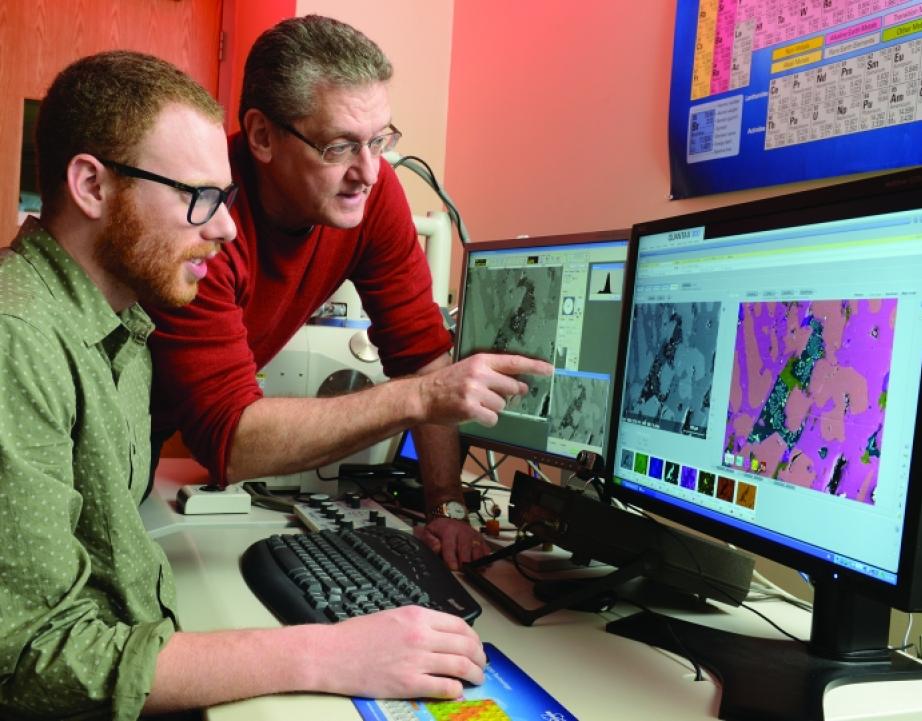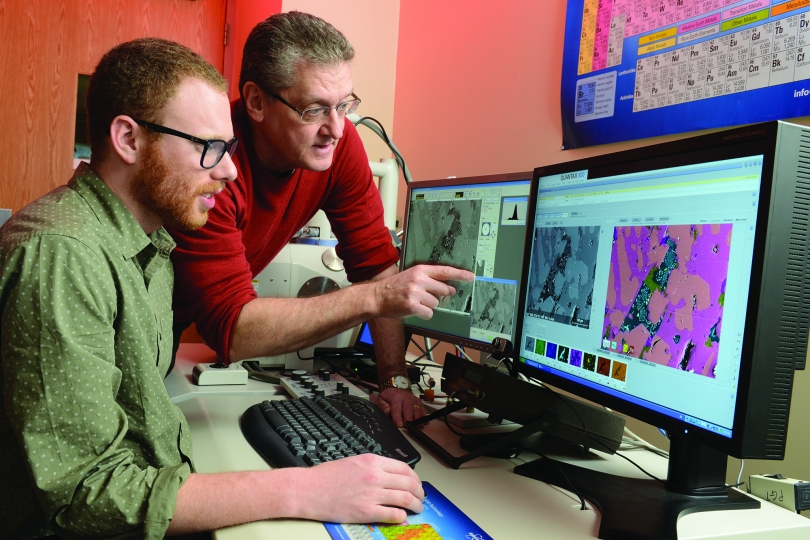by Aimee LaBrie
Developed in 1963, the scanning electron microscope (SEM) can magnify objects up to 300,000 times. And, unlike a standard optical microscope, the SEM’s high magnification produces an almost 3-D image, as well as detailed information about an object’s composition. And now, students at Rider will have access to an on-campus SEM, an instrument worth nearly half a million dollars, along with an expert operator who can train faculty and students on how to put it to use.
The SEM arrived this fall, and how it came to be at Rider can be characterized as a combination of serendipity and the quick reactions of the College of Liberal Arts, Education and Sciences faculty.
This past summer, Dean Patricia Mosto received an email about the availability of the SEM from Bruker Inc., a well-known international manufacturer of scientific equipment. Bruker was closing its Ewing, N.J., office, although it still wanted to have the SEM available to Ted Juswak, the instrument’s operator, who will remain in the area. Therefore, in exchange for housing the instrument, the company was offering a local college full access to the SEM, as well as the expertise of Juswak.
“We acted quickly; otherwise the SEM would have gone to another university,” says Dr. Jonathan Husch, professor and department chair of Geological, Environmental, and Marine Sciences (GEMS). As a geologist for over 40 years, Husch immediately understood the value of having access to an SEM for both educational and research purposes.
Husch, who has been at Rider since 1980, remembers the early ’90s when Rider had a mini-SEM, a low-end instrument that wasn’t nearly as powerful. “This new SEM is many things. It has the ability to magnify an object far beyond most other microscopes. It can tell you about the internal structure of the object, how the atoms are arranged and what elements are in the material. It also can map the elemental concentrations over an area. So, for example, if there is a contaminant like arsenic, the SEM can tell you not only that it’s there, but where exactly it’s located and how much of it exists.”
Dr. Alexander Grushow, professor and department chair of Chemistry, Biochemistry and Physics, was also a key player in getting the SEM to Rider. He sees it as an invaluable opportunity for all students and, in particular, for students of material sciences. “The microelectronics industry, for example, requires knowledge of materials, and having the SEM gives us an additional, more powerful tool for characterizing materials down to the atomic level.”
For all involved, it’s a win-win situation. Bruker gets the space to continue its work, and Rider receives “access to a state-of-the-art instrument and a 30-year expert in the field who can show us how to use it,” explains Husch. “It will give our students better hands-on training and opportunities for cutting-edge research along with excellent preparation for graduate school.”


